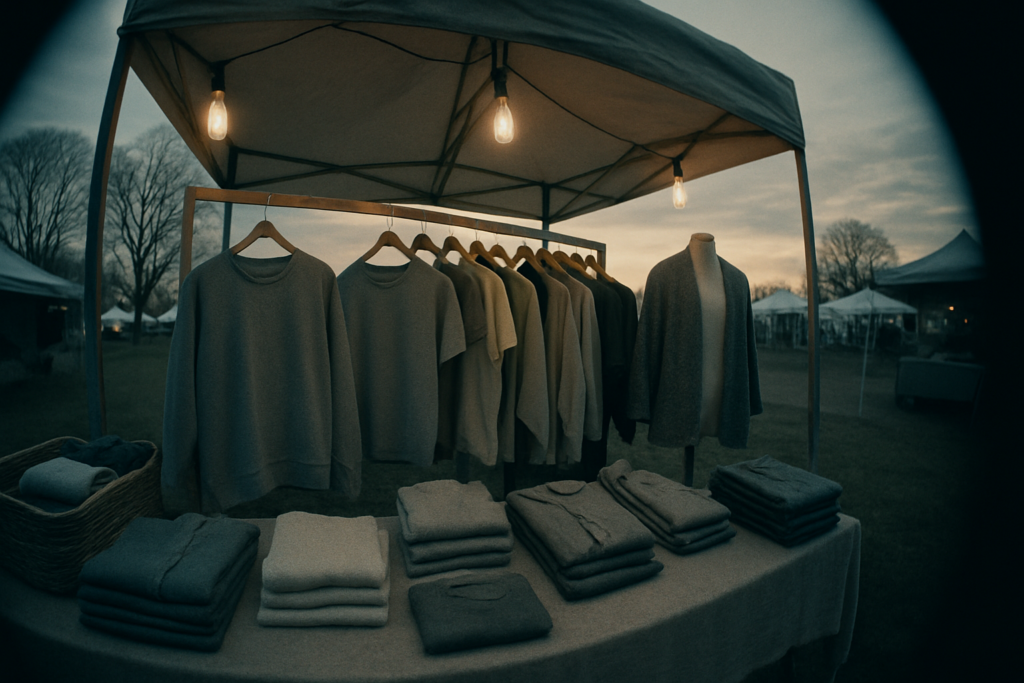Understanding Sustainable Fashion
Building a sustainable wardrobe starts with understanding what sustainable fashion means and why it matters.
What Is Sustainable Fashion?
Sustainable fashion minimizes negative environmental and social impacts. It incorporates eco-friendly materials like organic cotton, recycled fabric, and non-toxic dyes.
It also promotes ethical production practices that ensure fair wages and safe working conditions for workers. Brands like Patagonia and Everlane practice sustainability by prioritizing transparency and responsible sourcing.
Why It Matters
Sustainable fashion reduces environmental harm by lowering carbon emissions and water consumption.
- Conventional fashion contributes significantly to pollution, with the industry responsible for approximately 10% of global carbon emissions (UNEP, 2018).
- Supporting sustainable brands lessens this impact.
- Sustainable choices also foster positive social change by supporting ethical labor practices and fair trade.
- Buying from ethical brands ensures workers are treated fairly and earn livable wages, contributing to global well-being.
Benefits of a Sustainable Wardardrobe

A sustainable wardrobe offers substantial advantages that impact both the environment and your finances.
Environmental Impact
A sustainable wardrobe reduces your carbon footprint. Brands using eco-friendly materials like organic cotton and recycled polyester cause less environmental damage.
By choosing ethical fashion, I support practices that minimize water usage and pesticide application, reducing harm to ecosystems. Additionally, sustainable fashion helps lower waste, as durable items lead to fewer textile disposals.
Long-Term Cost Savings
Investing in quality pieces saves money over time. Durable clothing lasts longer, which means fewer replacements. For example, a well-made jacket can remain functional for several years, eliminating the need to buy new ones frequently.
Furthermore, timeless styles often avoid seasonal trends, preventing the need for constant wardrobe updates.
These benefits of a sustainable wardrobe make it clear that responsible fashion choices positively affect both the planet and your wallet.
Starting with What You Have
Building a sustainable wardrobe on a budget begins with assessing what you already own. This maximizes existing resources and reduces unnecessary purchases.
Assessing Your Current Wardrobe
Evaluating your current wardrobe is the first step in sustainable fashion. Lay out all your clothing items to see what you have. Categorize them by type, season, and frequency of use. Identify pieces you often wear and those neglected.
This process highlights gaps in your wardrobe, helping you make informed decisions when purchasing new items.
The Art of Repair and Care
Extending the life of your clothing through repair and proper care supports sustainability.
- Learning basic sewing skills like stitching a button or mending a hem can make a significant difference.
- Washing clothes in cold water and air drying reduces energy consumption and extends fabric life.
- Frequent maintenance, like removing pilling and handling minor fixes, keeps clothes looking new longer.
Budget-Friendly Sustainable Shopping
Exploring budget-friendly sustainable shopping means looking for ways to be eco-conscious without overspending. Here are practical strategies to achieve this.
Thrifting and Second-Hand Options
Thrifting provides a cost-effective way to find unique, sustainable clothing. By purchasing items from thrift stores or second-hand shops, I extend the life cycle of clothes and reduce waste.
Popular thrift stores, such as Goodwill and The Salvation Army, offer a variety of styles at a fraction of the cost. Online platforms like ThredUp and Poshmark make second-hand shopping convenient and accessible without leaving home.
These options help build a sustainable wardrobe without stretching my budget.
Choosing Affordable Sustainable Brands
Affordable sustainable brands offer eco-friendly choices without breaking the bank. Brands like Everlane and Pact provide transparency in their manufacturing processes and use sustainable materials.
I look for labels indicating organic cotton, tencel, or recycled fabrics to ensure my purchases align with my values. Many brands also have regular sales and offer discounts via newsletters, making it easier to buy sustainable pieces within my budget constraints.
DIY Tips for Sustainable Fashion
Building a sustainable wardrobe on a budget becomes more achievable with some DIY strategies. Personalizing and revitalizing existing clothing can significantly extend their lifespan.
Upcycling Old Clothing
Upcycling transforms old clothes into new, stylish items. Converting a pair of jeans into shorts, for example, only requires cutting the legs off at a desired length and hemming the edges.
T-shirts can be turned into crop tops or tote bags. Adding patches, embroidery, or fabric paint to jackets and jeans provides a fresh look without the need for new purchases. Repurposing old garments minimizes waste and infuses creativity into your wardrobe.
Basic Sewing Skills for Beginners
Basic sewing skills enable simple alterations and repairs. Learning to sew on a button, mend a seam, or take in a waistline ensures clothes remain wearable longer.
Start with a beginner’s sewing kit containing needles, thread, scissors, and a few basic patterns. Online tutorials and local workshops offer accessible learning resources. Mastering these skills not only saves money but also promotes self-reliance and sustainability in fashion.
These DIY tips, combined with mindful purchasing and care practices, help build a cost-effective and eco-friendly wardrobe.


 is the visionary founder of Eco Elegance Technique, a platform dedicated to blending sustainability with beauty and fashion. With a background in environmental science and fashion design, Lauranne has spent her career pioneering eco-friendly practices in both industries. Her work has influenced a shift towards ethical sourcing, waste reduction, and the use of organic materials. Passionate about education, she frequently speaks at conferences and works to inspire others to embrace a sustainable lifestyle.
is the visionary founder of Eco Elegance Technique, a platform dedicated to blending sustainability with beauty and fashion. With a background in environmental science and fashion design, Lauranne has spent her career pioneering eco-friendly practices in both industries. Her work has influenced a shift towards ethical sourcing, waste reduction, and the use of organic materials. Passionate about education, she frequently speaks at conferences and works to inspire others to embrace a sustainable lifestyle.
